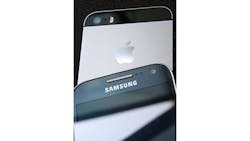With rapid changes creating a see-saw market, the smartphone applications processor sector still experienced 25% year-over-year growth, totaling $4.7 billion in Q1 2014. LTE smartphones, mid-to-low range smartphones, and emerging markets were keys to the surge. In a new report from Strategy Analytics, senior analyst Sravan Kundojjala, provides a global overview and identifies Qualcomm, Apple, MediaTek, Samsung, and Spreadtrum as the market’s biggest players.
Due to increased smartphone penetration in other regions, though, the market’s growth rate actually decreased from the 56% rise in Q1 2013. Additionally, between Q1 2013 and Q1 2014, unit shipments declined at 5.8%. The steepest declines occurred with 2G feature phones and 3G smartphones, the latter of which suffered from lack of demand.
On the flip side, 4G LTE basebands registered strong growth in Q1 2014. Qualcomm claimed the majority revenue share with 53% of the market. Since overtaking Texas Instruments in 2011, Qualcomm strengthened its LTE-integrated Snapdragon processor family with chips including Snapdragon 800/801, MSM8926, and MSM8930. The company also has a broad customer base, integration capabilities, and timely investments in new technology.
HiSilicon, Intel, MediaTek, and NVIDIA registered triple-digit y/y growth, in part due to starting from a low base. MediaTek also joined the triple-digital growth party. NVIDIA’s success stems from its Tegra 4 chip, featured in Xiaomi’s Mi3 flagship smartphone. HiSilicon and Intel also had high volume design success, while MediaTek traces its upswing to its 3G octa-core chips and strong grip in sub-$200 smartphones.
Marvell, Qualcomm, and Spreadtrum saw double-digit shipment growth based on good traction with multicore products. Smartphone designs also have done well in the market; Qualcomm leads the way with Android. On top of that, the company participates in Windows Phone (100% share), BlackBerry, and Firefox ecosystems. It’s estimated that the Android ecosystem accounted for the majority of Qualcomm’s application-processor (AP) shipments in Q1 2014.
About the Author
Sarah Mangiola
Sarah Mangiola has written on many different topics within Penton's Design, Engineering, and Sourcing Group. Originally from California, she graduated from the University of California, Davis with a B.A. in political science.
